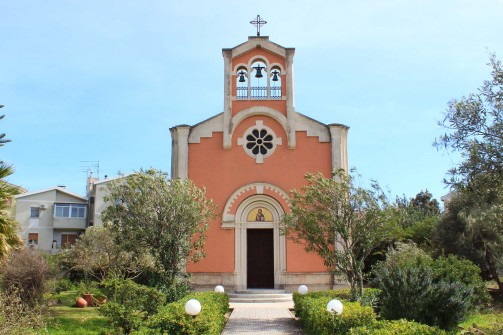The Church of the Most Holy Name of Mary stands within a garden between Tramontana Street and La Palma Avenue, in the district of the same name, and is part of the city of salt, consisting of the set of buildings related to work, leisure or used for residential purposes built on the edges of the wetland area. Erected in 1934 and designed by engineer Vincenzo Marchi, then director of the State Salt Works, it housed the masses of the salt villagers. It became the parish church of the La Palma Quarter from 1964 to 1979, was abandoned with the construction of a new, larger church designed to also gather the community of faithful from the Sun Quarter, to be used since 1991 only for special ceremonies. The single nave, simple body, and small size make it resemble an aristocratic chapel, while the mixture of heterogeneous stylistic features of the elevations also accommodates cautious references to medieval architecture. An arched portal surrounded by a cornice, surmounted by a cruciform sunburst rose window, and a three-light bell gable at the apex of the stepped cornice characterize the simple gabled facade. The chromatic contrast between the light-colored cornices and the red brickwork helps to highlight the church, which is punctuated on the side fronts by single-lancet windows, surrounded by cornices inspired by Art Deco styles.









